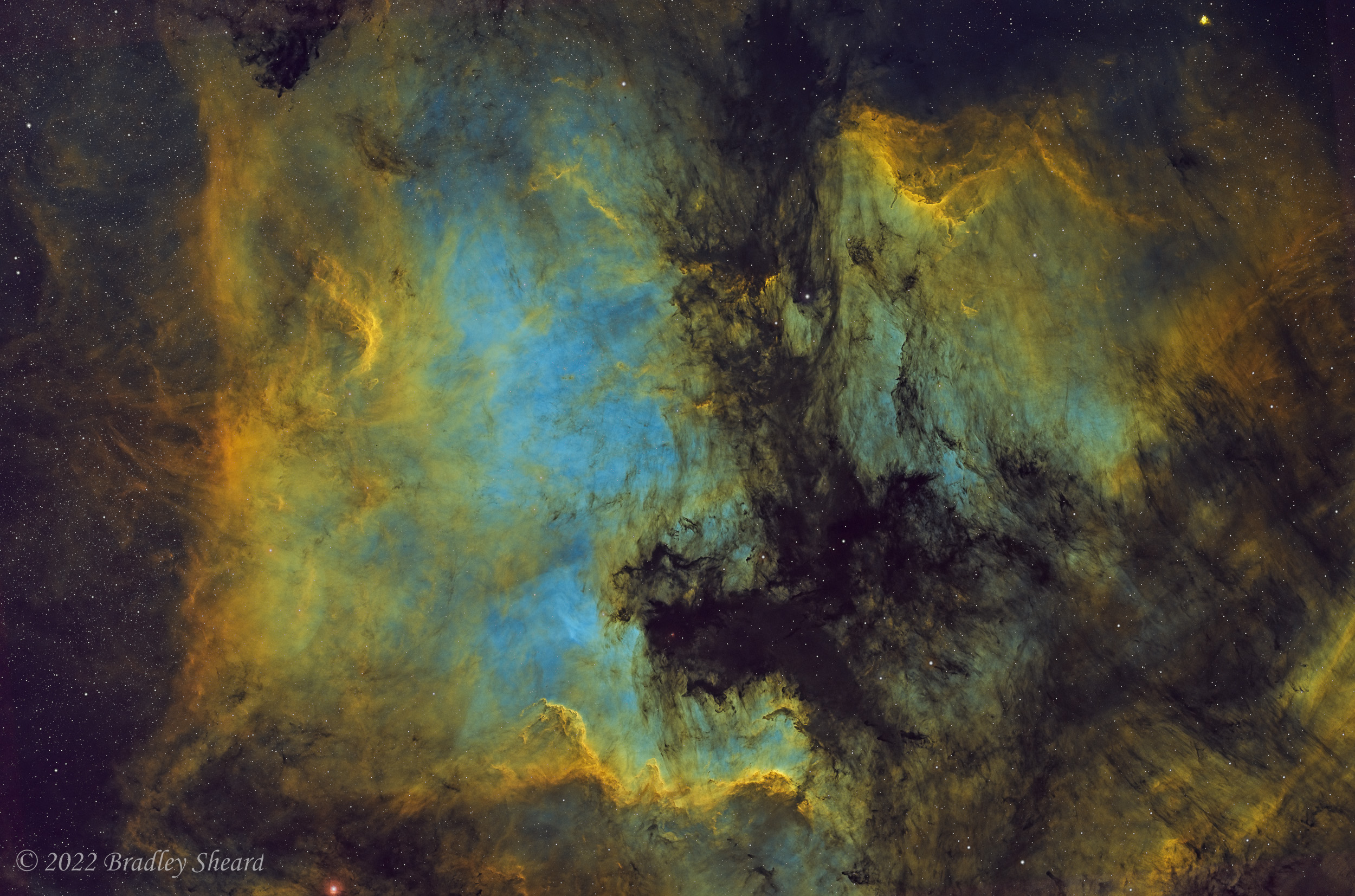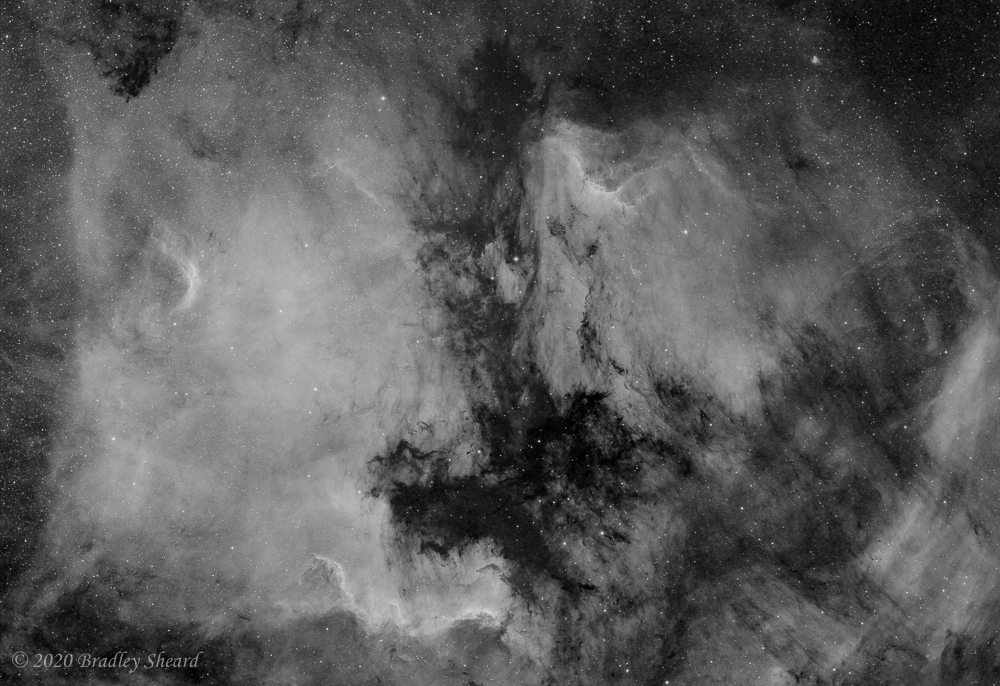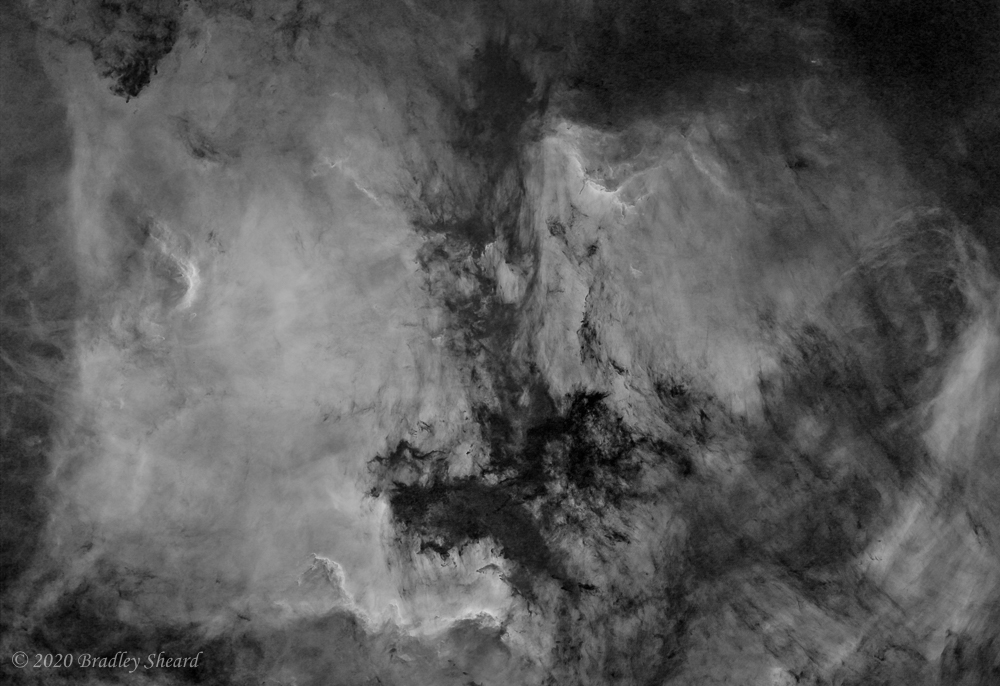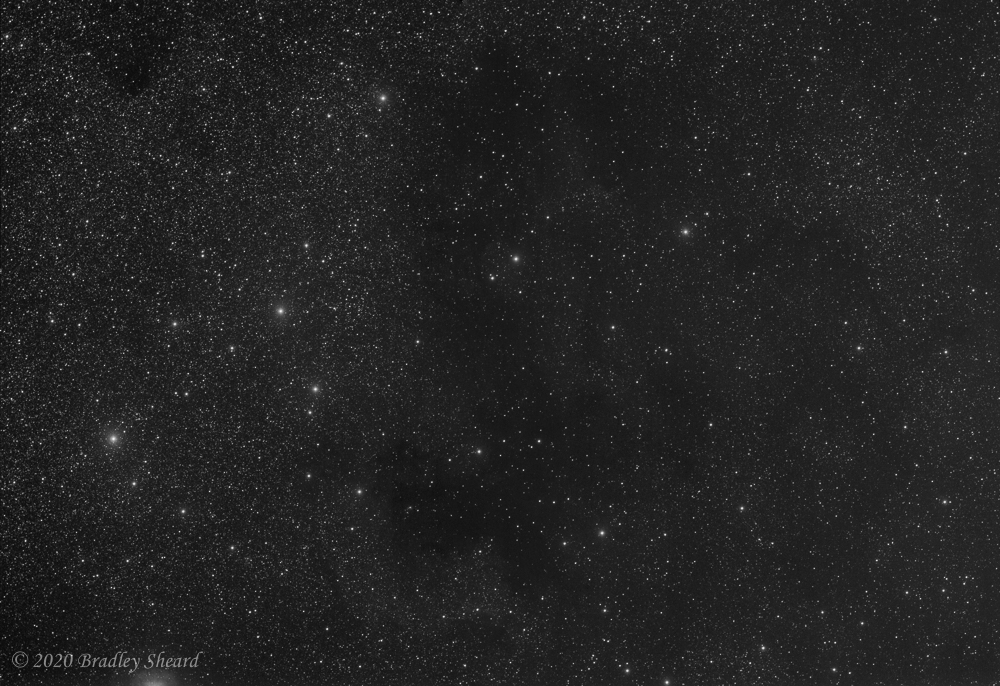North American & Pelican Nebulas (NGC 7000 & IC 5070) | |||
| « Previous | Back to Astrophotography Gallery | Next » | |
The North American (NGC 7000, left) and Pelican (IC 5070, right) Nebulae are two of the brightest and most often photographed deep sky regions. The bright portions of the nebulae are clouds of glowing hydrogen gas excited by an undetermined star(s), while the shapes that we see are largely due to obscuration caused by dark dust clouds lying between the glowing hydrogen and our vantage point. This is considered to be a star-forming region at an estimated distance of 600 pc (1957 light years), where star formation has been triggered by the expanding HII (excited hydrogen) clouds. Reference 1 identifies 1600 possible Young Stellar Objects (YSO) in the region, mostly located in the central dark cloud LDN 935. | |||
 | |||
| Optics: | Takahashi FSQ-106 refractor | ||
| Camera: | ASI6200MM Pro monochrome CMOS camera | ||
| Exposure info: | 20/20/10 SII/OIII/Ha, 10 min subs | ||
| Filters used: | Astrodon H-alpha (5 nm), OIII (3 nm), SII (5 nm) | ||
| Date: | August 2022 | ||
| Processing: | Pixinsight-->Photoshop-->Topaz denoise AI-->Lightroom | ||
 | |||
| Optics: | Stellarvue SVQ-100 refractor | ||
| Camera: | Starlight Xpress SX-46 monochrome CCD camera | ||
| Exposure info: | 18 x 20 min subs per frame / 2-frame mosaic | ||
| Filters used: | Astrodon H-alpha (5 nm) | ||
| Date: | November 2020 | ||
| Processing: | Pixinsight-->Photoshop-->Lightroom | ||
The image above was taken through a narrowband filter (a filter that allows only a narrow band of light at a very specific wavelength to pass through to the digital camera), specifically a H-alpha filter (hydrogen, 656.3 nm). The bright areas of the image are emitting light at a wavelength of 656.3 nm, which occurs when the electron in an excited hydrogen atom falls from the third to the second orbital, or energy level. The roll-over version of the image is annotated with catalogue identifications of some of the major features of the region. | |||
Below is a version of the image that presents only the nebulosity in the region, using a new process available in Pixinsight to remove the stars. By removing the stars, some of the fainter features in the nebula really stand out. | |||
 | |||
Another interesting version of the image is shown below, presenting only the stars. This was taken through an infrared filter, which allows only the stars to be recorded by the camera, without the nebulosity. Since infrared light more readily penetrates interstellar dust, more stars are evident in some regions of the infrared image than the basic version (top of page). Also note the dark areas in the center and right portions of the infrared image, representing dark nebula that block out much of the background field of stars (LDN 935). | |||
 | |||
REFERENCES
1. Guieu, Rebull, Stauffer, Hillenbrand, Carpenter, Noriega-Crespo, Padgett, Cole, Carey, Stapelfeldt and Strom,"The North American and Pelican Nebulae. I. IRAC Observations." The Astrophysical Journal, 697:878-800, 2009 May 20.